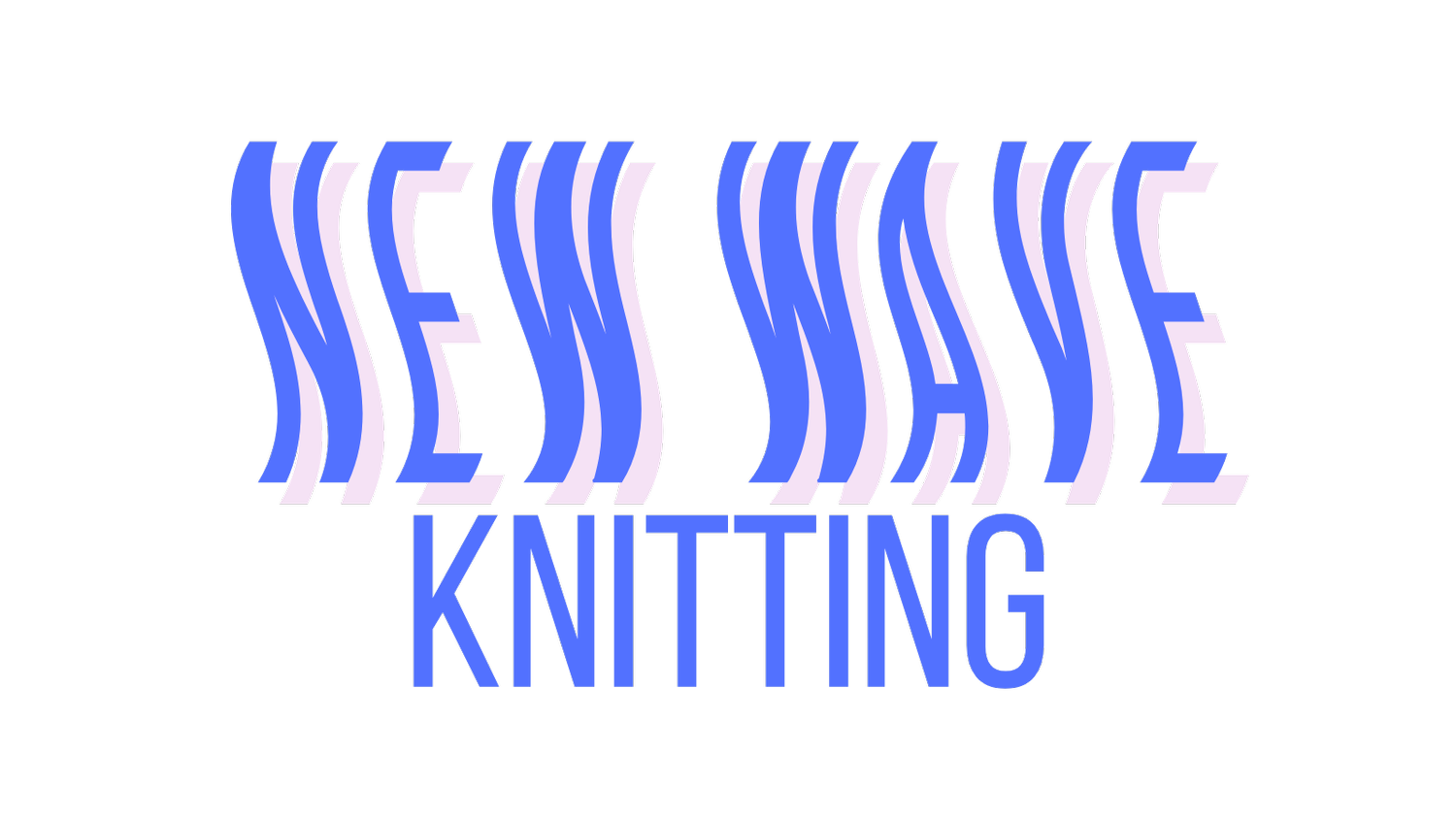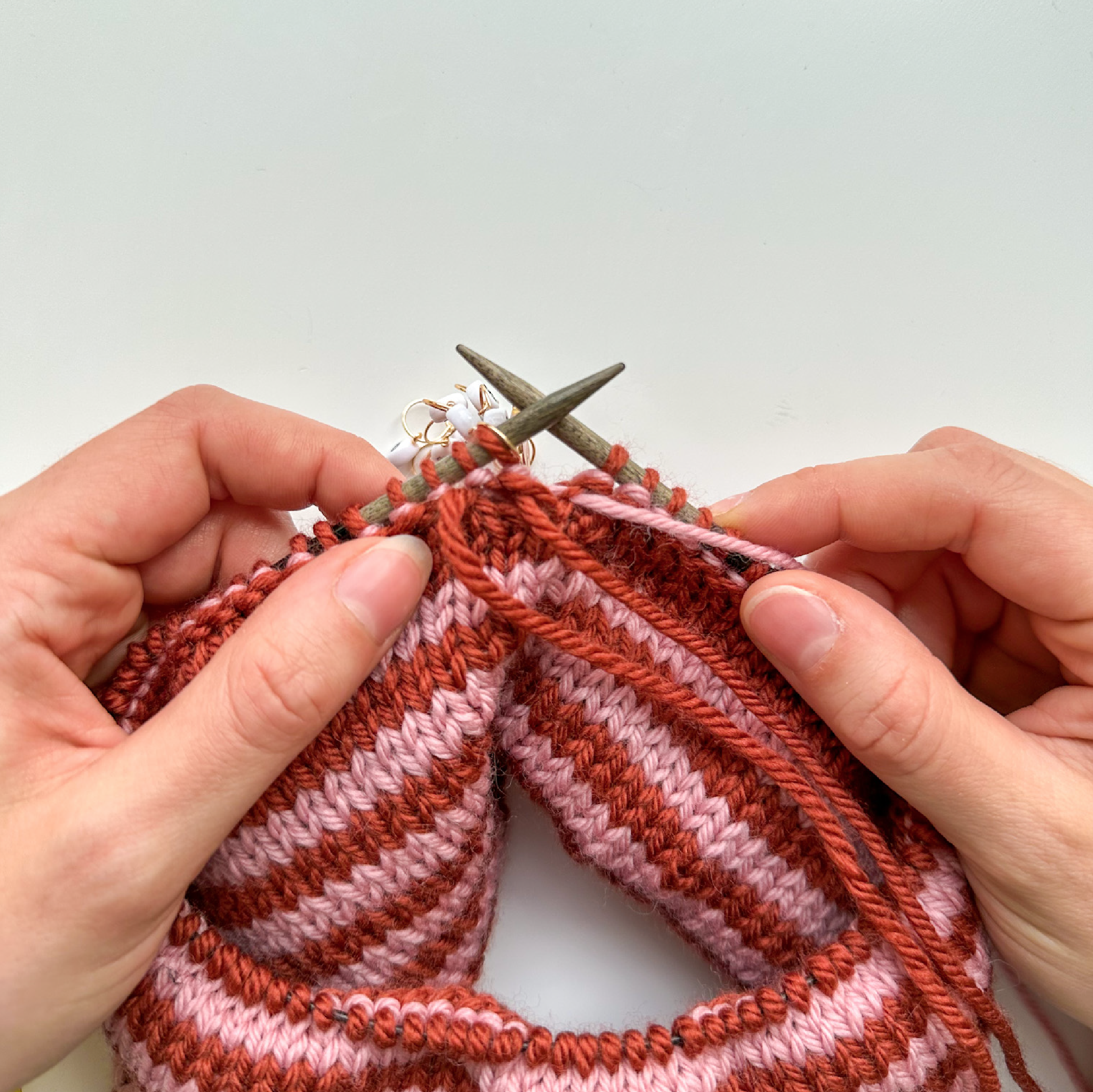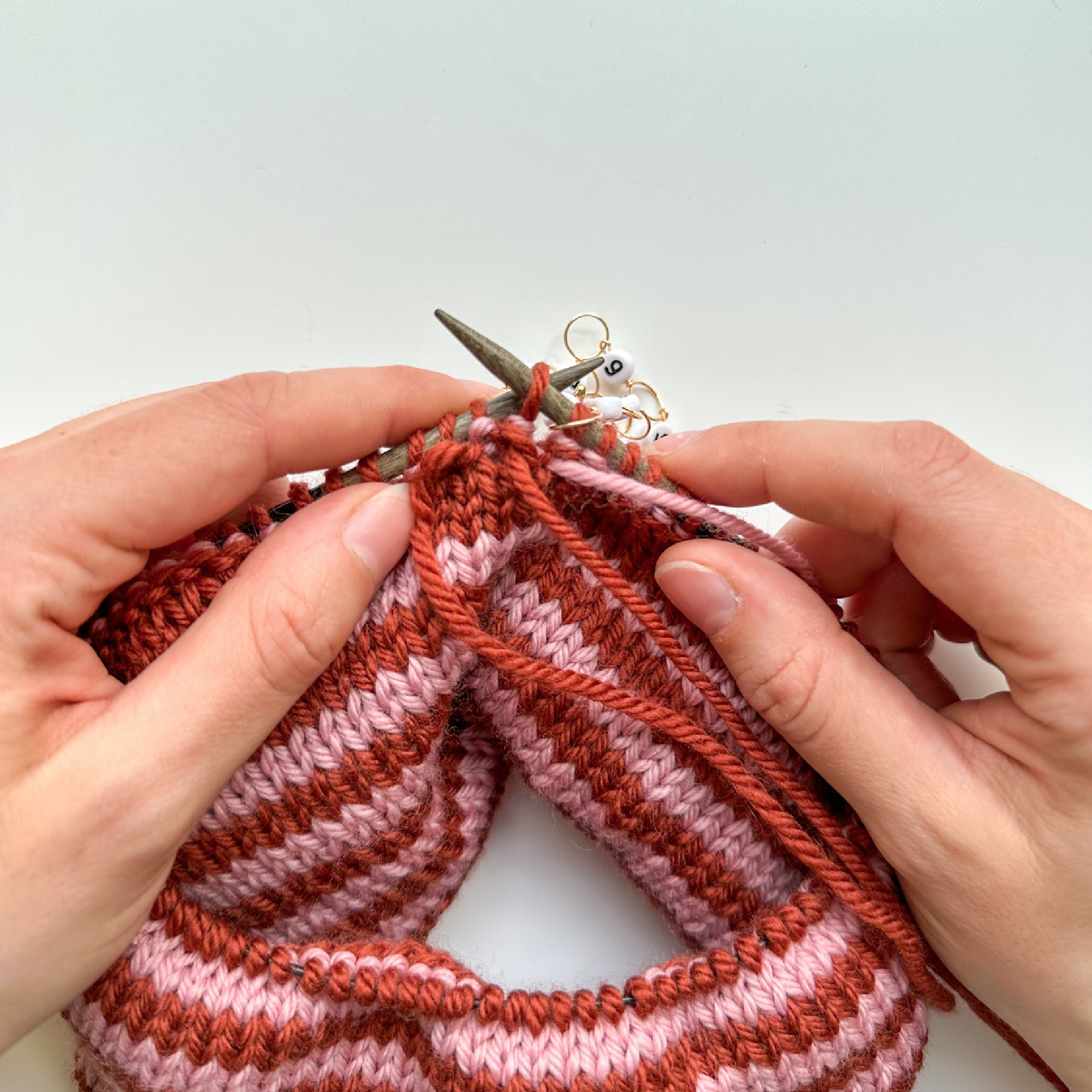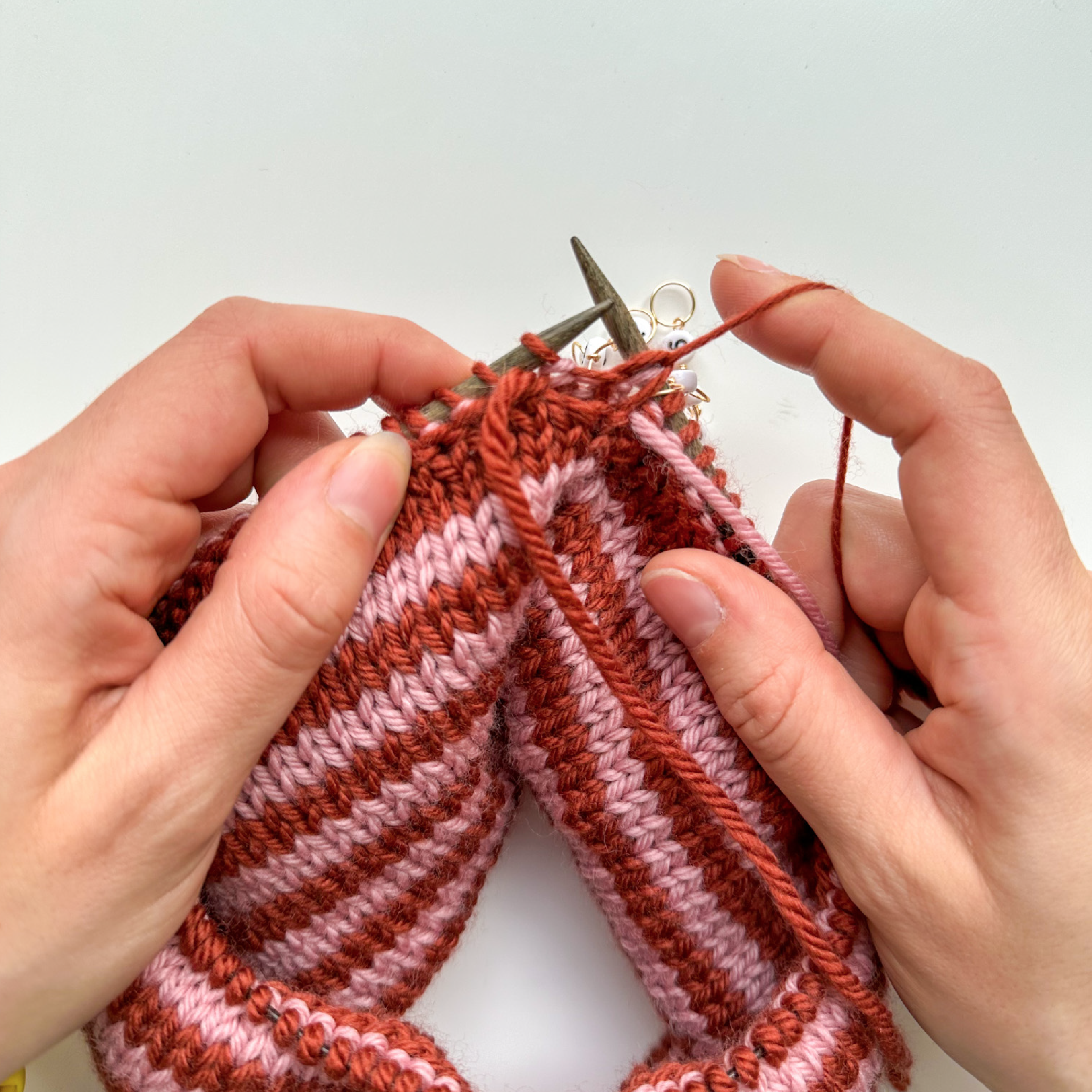How to Do the German Short Row: A Step-by-Step Guide
Have you ever come across a pattern with short rows and felt intimidated? Fear not, because learning the German short row technique can be a game-changer for your knitting projects. In this post, we'll dive into what a German short row is and how to do it, along with some tips and tricks to make it easier.
What is a short row?
The Staple Sock uses German short rows to shape the heel.
In short, a short row is when you don't knit all the stitches in a row before turning your work. Instead, you turn your work before reaching the end of the row, creating a shorter row. Short rows are often used to shape a piece of knitting, such as creating a curve or angle. You may come across short rows in working the heel of a sock (like in my Staple Sock pattern!) or in shaping the neckline of a top down sweater. If you’re making something that is stockinette in the round and you have to do a chunk of purl rows, you can also use short rows to turn your work to knit on the wrong side and avoid purling! That is an optional technique included in my Tall Staple Beanie pattern.
There are a few different techniques for working short rows, including the German short row technique, which is my personal favorite. The German short row uses a simple turn method that makes it easy to see where you turn your work. One common issue with using short rows is creating a hole where the work was turned. However, with the German short row technique, I personally don’t experience any holes that I need to go back and fix.
Ultimately, learning how to work short rows can add versatility to your knitting projects and open up new possibilities for design. And the German short row is a great technique to start with!
How to do the German Short Row
Check out the step-by-step instructions as well as the video tutorial below to learn how to do the German short row. In this tutorial, I am using the Everyday Merino yarn, which is my absolute favorite superwash worsted weight yarn. I am also using my go-to needles, which is part of the Lykke Driftwood Shorties Interchangeable Needle Set. (Please note that these links are affiliate links. If you make a purchase after clicking, I earn some yarn money at no extra cost to you!)
Step 1
Work in pattern until you reach the point in which you have to do the German row.
Step 2
Turn your work to the wrong side (WS).
Step 3
Slip the last stitch you worked purlwise from the left needle to the right needle with the yarn in front (regardless of whether it is a knit or purl stitch).
Step 4
Pull up on the working yarn. You will see that pulling the yarn up makes the stitch look almost like two stitches, and we call this a double stitch (DS).
If you have to purl the next stitch, wrap your working yarn around the back toward the front of the right needle and purl the next stitch like normal.
If you have to knit the next stitch, bring the yarn to the back of the needle and knit as normal.
Step 5
Continue knitting or purling in pattern. Follow the instructions in your pattern for when to turn your work again.
If you have to knit or purl over a DS, you can knit or purl it like a single, normal stitch. But again, be sure to follow your pattern’s instructions.
Video Tutorial: German Short Row
Tips for doing the German short row
As with any new technique, it can take a little bit of practice to get the hang of the German short row. Here are some tips and tricks to help you along the way:
To avoid gaps in your work, pull the yarn tightly in step 4.
If you’re afraid you won’t recognize when you reach a DS in your work, you can use a stitch marker to keep track of where it is.
As you’re just getting started, you can count your stitches after each turn to make sure you have the correct number.
Learning the German short row technique can open up a world of possibilities in your knitting projects. With a little bit of practice and some patience, you can master this technique and take your knitting to the next level. Give it a try and see what you can create!
Want a tutorial for a specific knitting technique? Let me know in the comments! And be sure to sign-up for the New Wave Knitting Circle Newsletter so you never miss a blog post or tutorial.






